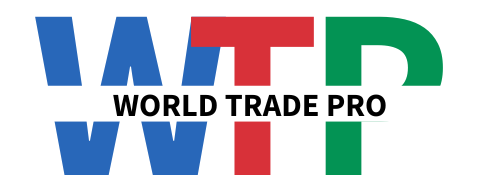How physical arbitrage of crude oil works?
Quote from chief_editor on September 23, 2023, 9:33 am
Physical arbitrage in the oil market involves taking advantage of price differences for the same or similar grades of oil in different locations or markets. The goal is to buy oil at a lower price in one location and sell it at a higher price in another, thus earning a profit from the price differential. Here's how physical arbitrage of oil works:
1. Identifying Price Disparities:
- Traders closely monitor various oil markets and locations to identify price disparities. These disparities can be due to factors such as regional supply and demand imbalances, transportation costs, or logistical constraints.2. Evaluating Costs and Risks:
- Before engaging in arbitrage, traders must carefully assess the costs involved, including transportation, storage, and any associated fees or taxes. They also consider the risks, such as changes in market conditions, geopolitical events, or regulatory changes.3. Purchase and Transportation:
- Once an arbitrage opportunity is identified, the trader buys oil at the lower-priced location. This may involve arranging transportation, whether by pipeline, tanker, rail, or truck, to move the oil to the higher-priced destination.4. Storage (if necessary):
- In some cases, traders may need to store the oil temporarily, especially if the price difference is expected to increase over time. Storage costs and logistics are factored into the decision.5. Sale in Higher-Priced Market:
- When the oil reaches the higher-priced market, it is sold at the prevailing market price. The price difference between the purchase price and the sale price, minus all associated costs, represents the trader's profit.6. Managing Risks:
- Throughout the process, traders actively manage risks. This includes monitoring market conditions, hedging against price fluctuations using futures contracts, and staying informed about factors that could impact the arbitrage opportunity.7. Arbitrage Window:
- Arbitrage opportunities can be short-lived, and market conditions can change rapidly. Successful physical arbitrage often relies on the trader's ability to execute transactions swiftly and efficiently.8. Regulatory and Compliance Considerations:
- Traders must also navigate regulatory and compliance requirements, especially when dealing with cross-border transactions or transporting oil through different jurisdictions. Compliance with environmental, safety, and tax regulations is crucial.9. Continuous Monitoring:
- Even after executing an arbitrage trade, traders continue to monitor market conditions to determine when to close out their positions and lock in their profits.10. Reinvestment or Repositioning:
- Traders may choose to reinvest their profits in new arbitrage opportunities or adjust their positions based on changing market dynamics. Flexibility and adaptability are essential in this field.Physical arbitrage in the oil market requires a deep understanding of the oil industry, including factors influencing supply and demand, transportation logistics, and pricing dynamics. It also involves significant risk management, as oil prices can be volatile, and unexpected events can disrupt arbitrage strategies. Successful traders rely on their expertise, market insights, and efficient execution to capitalize on these opportunities and generate profits.

1. Identifying Price Disparities:
- Traders closely monitor various oil markets and locations to identify price disparities. These disparities can be due to factors such as regional supply and demand imbalances, transportation costs, or logistical constraints.
2. Evaluating Costs and Risks:
- Before engaging in arbitrage, traders must carefully assess the costs involved, including transportation, storage, and any associated fees or taxes. They also consider the risks, such as changes in market conditions, geopolitical events, or regulatory changes.
3. Purchase and Transportation:
- Once an arbitrage opportunity is identified, the trader buys oil at the lower-priced location. This may involve arranging transportation, whether by pipeline, tanker, rail, or truck, to move the oil to the higher-priced destination.
4. Storage (if necessary):
- In some cases, traders may need to store the oil temporarily, especially if the price difference is expected to increase over time. Storage costs and logistics are factored into the decision.
5. Sale in Higher-Priced Market:
- When the oil reaches the higher-priced market, it is sold at the prevailing market price. The price difference between the purchase price and the sale price, minus all associated costs, represents the trader's profit.
6. Managing Risks:
- Throughout the process, traders actively manage risks. This includes monitoring market conditions, hedging against price fluctuations using futures contracts, and staying informed about factors that could impact the arbitrage opportunity.
7. Arbitrage Window:
- Arbitrage opportunities can be short-lived, and market conditions can change rapidly. Successful physical arbitrage often relies on the trader's ability to execute transactions swiftly and efficiently.
8. Regulatory and Compliance Considerations:
- Traders must also navigate regulatory and compliance requirements, especially when dealing with cross-border transactions or transporting oil through different jurisdictions. Compliance with environmental, safety, and tax regulations is crucial.
9. Continuous Monitoring:
- Even after executing an arbitrage trade, traders continue to monitor market conditions to determine when to close out their positions and lock in their profits.
10. Reinvestment or Repositioning:
- Traders may choose to reinvest their profits in new arbitrage opportunities or adjust their positions based on changing market dynamics. Flexibility and adaptability are essential in this field.
Physical arbitrage in the oil market requires a deep understanding of the oil industry, including factors influencing supply and demand, transportation logistics, and pricing dynamics. It also involves significant risk management, as oil prices can be volatile, and unexpected events can disrupt arbitrage strategies. Successful traders rely on their expertise, market insights, and efficient execution to capitalize on these opportunities and generate profits.
